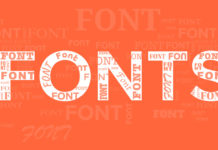When you want to make or buy something while on a website, you make decisions. Analyzing the key elements of UX, you will better understand how these decisions are made. By meeting the needs of users, we motivate them to stay on the website, engage in interaction and be more satisfied.
There are five key elements of UX. All 5 steps are dependent on each other and the whole process goes from bottom to top.

1. Strategy
The strategy defines the reason why an application or product exists, why you are doing the whole business, who you are doing and why people would use it. The main goal here is to define the needs of users and business goals. This can be done through a strategic research where potential users would be interviewed on one side, and business needs would be adjusted on the other.

2. Volume
The scope defines the functional and content requirements. What features and content should contain the product. Requirements should meet strategic goals.
Functional requirements – related to the functioning of the entire side, as certain parts work together. These are the characteristics that the user needs to store to achieve a specific goal.
Content requirements – the information we need to give value to what we do (text, images, video). Without defining the content, we will not know how much time it takes for the completion of the project.

3. Structure
The structure defines the user’s interaction with the product, the behavior of the whole system, how it is organized, and how much it should be displayed at a given moment. There are two structural components: interactive design & information architecture.
Interactive design – when functional features are already defined, defines the user’s relationship with the product as a system that needs to respond to given user requests.
Information architecture (IA) – When requirements are given, defines how the content should be organized and where it is set, in order to facilitate the user’s understanding of the product.
Excellent Interactive design:
Helps users meet their goals;
Has effective interactivity and functionality (what the user can do);
It informs the user about changing conditions while on the page (file has been saved, feedback when the wrong email has been entered, etc.);
Prevents errors when the application requires confirmation from the user for a potentially harmful effect (eg deletion).
Excellent Information Architecture:
Organizes content by categories and priority information based on user needs and business goals;
Making easily understandable content and switching from one to another content is simple;
It is suitable for your audience;
It is flexible for adaptation and adapts to changes.

4. Skeleton
The skeleton determines the visual form of the screen and presents all the elements that need to be interacted. Shows how the user moves through information and how the information is presented to be clear, effective, and obvious.
Wireframes are widely used to create a visual format. It is actually a static diagram that presents the visual format of the product, which includes content, navigation, and all forms of interaction.
The skeleton is divided into three parts: Design of the interface, design of navigation and information design.
Interface design – presenting and editing elements so they can act with the functionality of the application;
Navigation Design – the way of navigating through the information;
Information Design – presentation of the information in an easily understandable way.
The skeleton should answer the following questions:
What visual forms should be presented on the screen?
How can interactions be presented and divided?
How can a user move around the site or application?
How can the content be clearly presented?

5. Area
The last step. It refers to how your product, typography, colors, the actual layout, and so on will look. The goal is to simplify things, be easy to understand and the user to absorb the necessary information. It is necessary to visually present the entire content and buttons, for the user to know what can do and how to communicate with them.

Conclusion:
Everything is connected. If you do not have a clear strategy, you pay the price over the entire project. An ordinary decision can completely change the course of the project. It’s okay to make your decisions change from time to time and of course you can “punch”. It’s not good to make fixed decisions, because in the end it can turn out to be a product that no one wants. Changes are inevitable.
The root of every successful design is a strategy, which later becomes the scope where the goals of the user and the business are set. Below is the structure where the interactions and the distribution of information are defined. Through wireframes “scanners are made” to present the interactions and structure defined in the structure. The skeleton allows the information to be clearly presented. Finally, on the surface, all the decisions made up to then are taken into account and a final visual presentation is made.






















